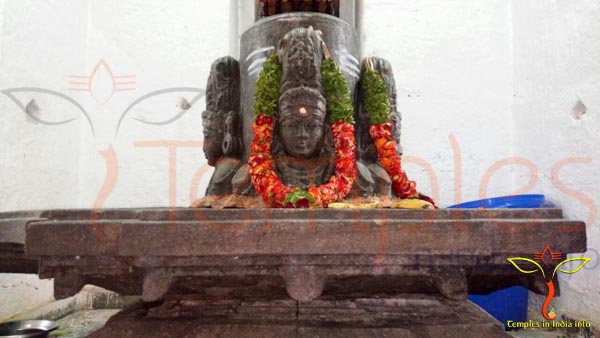Shiv Ratri pooja is of a great significance. In Hinduism, it is been said that doing the rituals and worshipping Lord Shiva by following all the rituals, pleases the Lord Shiva most. It is being also believed that pleasing Lord Shankara on Shivratri makes the person to absolved of all the past sins and gets Shiva’s blessing in terms of Moksha or Salvation.
Merits of Shivratri Pooja:
Worshipping Lord Shiva on Shivratri by following all the rituals and rules, pleases the Lord Shiva, the most and provides spiritual growth for the devotees.
It is being also remarked in the Shiv Purana that performing abhishek of Shiv Linga using the six important dravyas which are the milk, the yogurt, the ghee, the water, the sugar and the honey, along with the chanting of the Sri Rudram, Chamakam and the Dasa Shanthi pleases the Lord Shiva at its most. Each of the dravya (liquid) used in the abhishekam blesses with a unique quality.
- Milk is for the blessing of purity and piousness.
- Yogurt is for prosperity and progeny.
- Honey is for sweet speech.
- Ghee is for victory.
- Sugar is for happiness.
- Water is for purity.
Along with this, Shiv Ratri is being considered as an important day for women as married women pray to Lord Shiva for the health of their husband and children where as unmarried women ask for a life partner just like Lord Shiva as Shiva is being considered as the most ideal husband.

Getting ready for Shiv Ratri Pooja:
For worshipping Lord Shiva on the purest day of Shivratri, the devotees wake up early in the morning and go for a ritual bath. Most of the people preferred to take a bath in the holy river Ganga. After taking bath, the worshippers follow the way of worshipping Lord Sun, Vishnu and the Lord Shiva. This festival is considered as an important hindu day. At this day, the devotees wear new and fresh clothes and along with it pay a visit to the near by temple of Lord Shiva. Most of the devotees preferred to perform a fast on this day, within which some of the devotees even do not consume a drop of water too.
Performing Maha Sivarathri Pooja:
Priests of various temples perform ritual pooja of Linga for around 3 hours all through the day and night of the shivratri festival. Chanting of the Mahamrityunjaya mantra or om namah shivaya and sounds of bells reverberate the atmosphere of the temple. The ritual bath is being done using milk, honey, yogurt, sugar, ghee and water which helps in the purification of the temple and the human heart as well. It also provides the purification of the soul as well. These six items are the very important part of the Lord Shiv’s life. After this, Bilwa leaves, which have to be a stalk with three leaves, is kept on top of the Shivalinga to cool the hot-tempered deity. Ber or jujube fruit (red date) is also offered to Lord Shiva, as it is symbolic of longevity and gratification of desires. Some devotees also offer the auspicious betel leaves to Lord Shiva marking satisfaction with worldly pleasures.
Garlanding of Linga with flowers and garlands is also a part of the ritual Shivaratri Puja. Devotees also burn incense sticks as is said to yield wealth. Many also light lamps to symbolize attainment of knowledge. It is said that by offering water, hugging the Linga, lighting the diya and incense andringing the temple bells, devotees call into focus all their senses, making them acutely aware of themselves and the universe to which they belong.
This ritual worship of Lord Shiva continues through the day and night of Shivaratri. Devotees stay awake and spent the night in Shiva temples by chanting ‘Om Namah Shivaya’ and singing hymns and verses in praise of Lord Shankar. Devotees observing vrat on Shivaratri break it only the next morning by partaking prasad offered to Lord Shiva.
